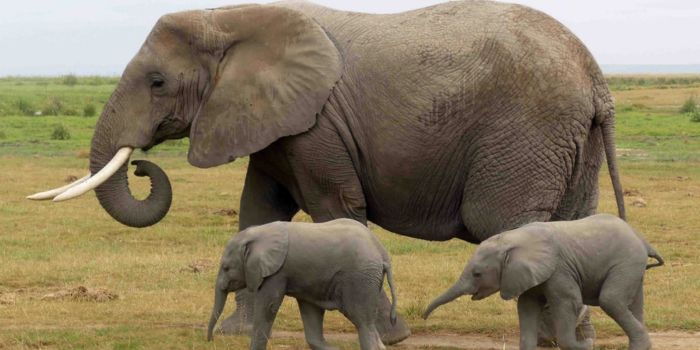The phenomenon of twin births in elephants is exceedingly rare, occurring approximately less than one per cent of the time among elephant births. This rarity is compounded when considering the gender of the twins. Male-female twin births are even rarer.
The Kenya Wildlife Service (KWS) on Thursday, January 2, shared on its social media platforms that it spotted a mother elephant with twins in Shimba Hills National Reserve. The occurrence becomes the third twin elephant birth in three years in Kenya.
The first recorded twin elephant birth was of Alto’s Twins (female twins) in November 2023, at Samburu National Reserve. The second case was the Bora’s Twins (male and female) in January 2022, also at the same park, unfortunately, the female calf later disappeared.
In central Thailand, an Asian elephant named Jamjuree gave birth to a set of twins (a male and a female) in June 2024. This event was particularly significant as it marked the first official record of elephant twins of different genders in that country.
Elephants enjoying a mud bath at Sagalla village, Taita Taveta County in December 2018.
Photo
KNA
Why is it rare for an elephant to give birth to twins? The rarity of twin births in elephants can be attributed to several biological and ecological factors. We’ll look at five main factors.
Elephants have the longest gestation period of any mammal, lasting between 18 and 22 months. This extended period allows for the development of a single calf, which requires significant maternal resources.
Carrying two calves simultaneously would place immense strain on the mother’s body, making it less likely that both could develop properly.
The nutritional demands of carrying twins are significantly higher than those for a single calf. Elephants need to consume large quantities of food daily to support their own health and the growth of their offspring.
When twins are born, the mother may struggle to produce enough milk to nourish both calves adequately, leading to high mortality rates among twin births.
There are inherent biological limitations that make twinning uncommon in elephant populations across the world.
Factors such as genetics may play a role; some females might be predisposed to having twins while others are not.
Environmental conditions can also affect twinning rates. For instance, improved food availability and reduced stressors from poaching or habitat loss may increase the likelihood of healthier pregnancies and potentially higher twinning rates in certain populations, as seen in specific regions like Tarangire National Park in Tanzania.
Even when twins are born, survival challenges can pose a risk due to competition for resources and care from the mother and other herd members.
In many cases, one calf may not survive due to insufficient nutrition or maternal attention, further contributing to the rarity of successful twin births.
A study conducted on elephants in Tarangire National Park in Tanzania revealed that between 1992 and the early 2000s, there were notably higher rates of twin births compared to other regions, with reports indicating that out of 291 births during this period, 14 were twins.
Tourists watching elephants at the Masai Mara in Kenya.
Photo
&Beyond Bateleur Camp


